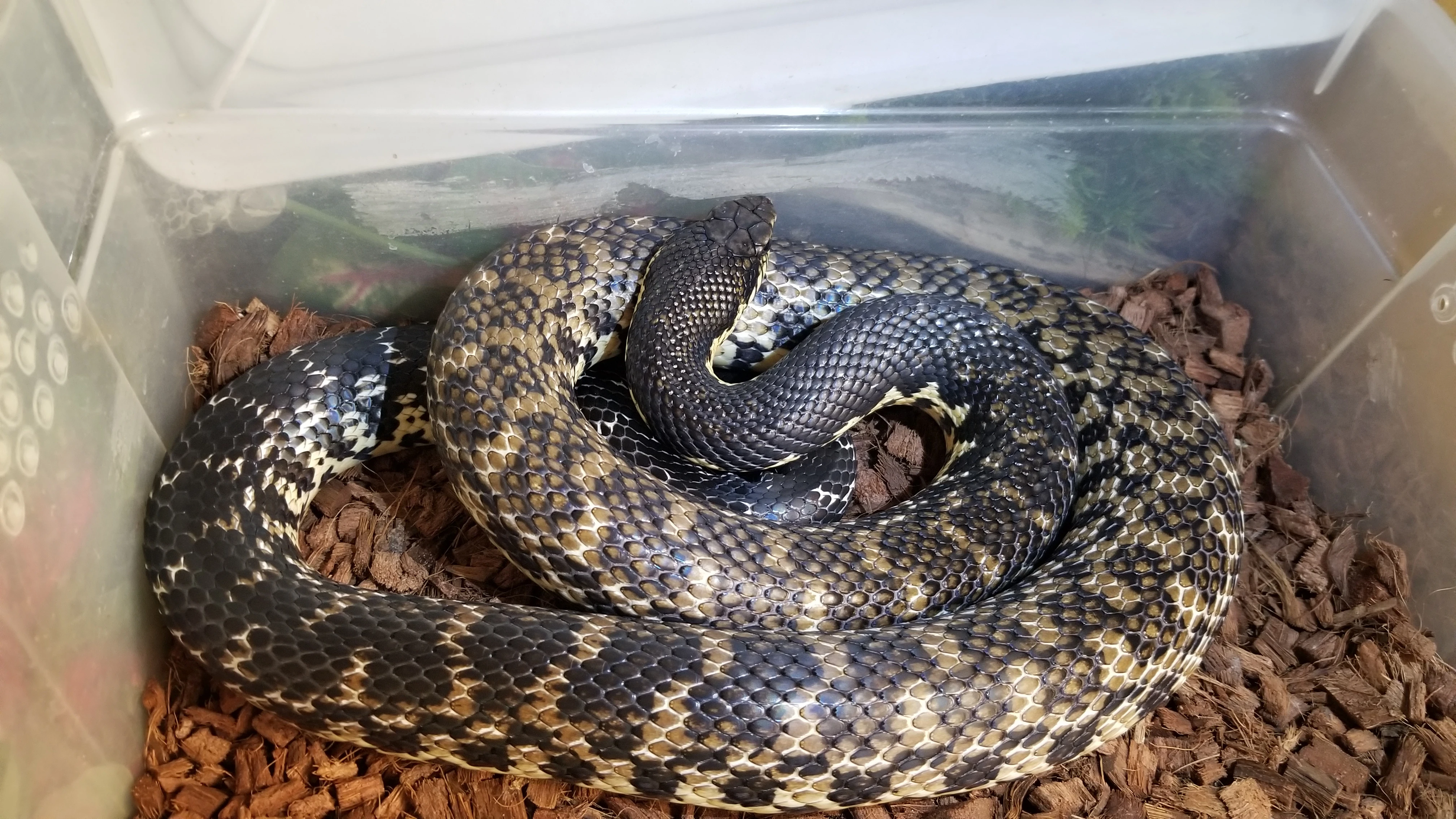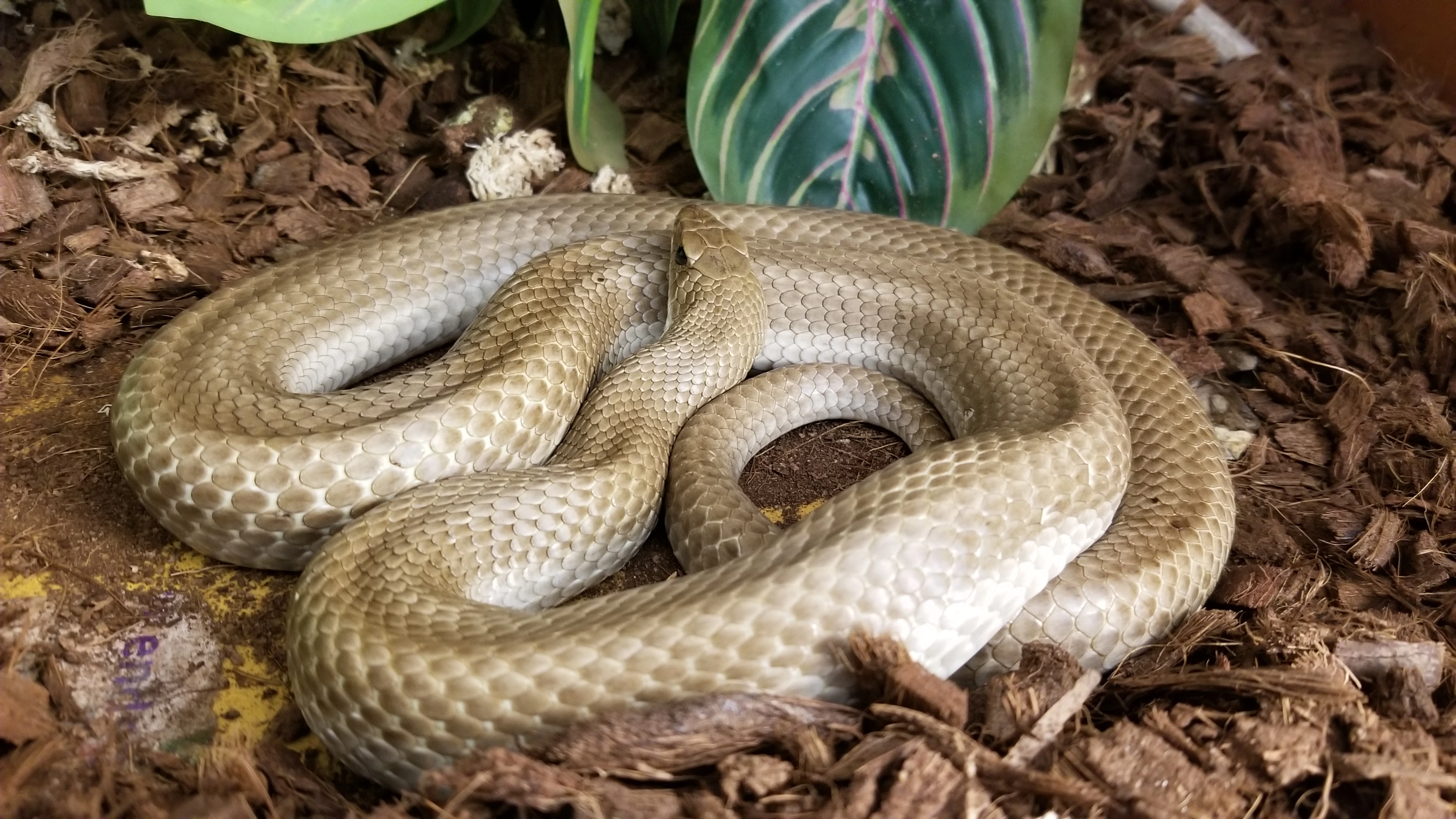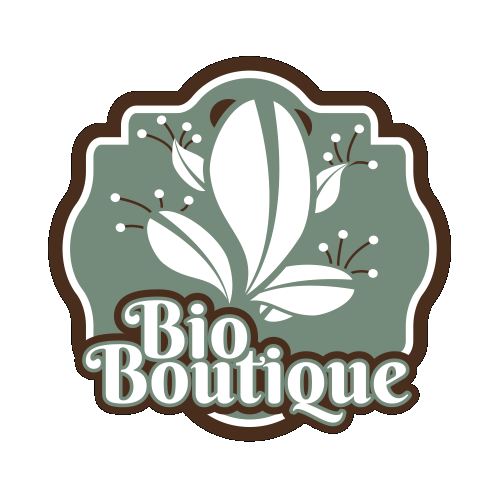
Madagascar Hognose Snakes
By: Randilyn Halvorsen

**UNDER CONSTRUCTION**
This page is all about my experiences with and how I keep the three species of Madagascar hognose snakes. First will be the basics and care parameters while further down I will go into details and rants.
It has been difficult to find any substaintial information about this group of snakes being kept and bred in captivity, only a few blurbs here and there and one solid article by Riley Jimison here. I first learned of their existance back in 2017 when a friend of mine had a large wild caught male Giant Madagascar hognose on his table at a reptile show. I was attracted to the solid black coloration that faded into checkers down the body and the unsual size for a 'hognose', near 5ft. Needless to say after a conversation with my buddy, I came home with a big, fast, flightly hognose and I was immedietly hooked.
In the years since, I have produced two of the three species. The Speckled hognose being the hardest to find, I have yet to obtain a healthy female capable of producing. I am currently looking for more Speckled Hognose, to anyone who may read this and knows of any!
Three Species
Sometimes referred to as the Malagasy hognose, this group consists of three species in the genus Leioheterodon and each is unique. All three species are considered non-medically significant rear-fanged venomous and have a dainty upturned nose. Despite the name, they are not related to the American hognose snakes and are infact more closely related to elapids.
Blonde Madagascar Hognose: Leioheterodon modestus

Giant Madagascar Hognose: Leioheterodon madagascariensis

Speckled Madagascar Hognose: Leioheterodon geayi

Husbandry Basics
Temperature and Humidity: 78-86 degrees Fahrenheit gradient. Humidity around 50%.
- Substrate should be kept mostly dry. I provide humidity boxes with damp moss and they do make use of them. Shedding never seems to be an issue.
- Under tank heating seems to work best. All three species like to hide under things, including digging in the substrate and burrowing under bowls. They will make tunnels and paths, often pushing substrate away from the heat source and making themselves a comfy sleeping spot in the warm empty space.
- I have played with UV and other light from above. The Giants and the Blondes made use of the basking area randomly but not regularly. The speckled avoided the light and would only hide.
Enclosure: Varies: A large front opening PVC style enclosure is suitable for adults. Younger individuals do better in smaller spaces with dark sides such as tubs. These species benefit from interactive and complex spaces with deep substrate.
- The Giants are more outgoing and active than the other two and will make use of every single item within their enclosure.
- The Blondes do like to hide but when you aren't watching, they cruise all over.
- The Speckled on the other hand prefer to hide and wait in darkness, I very rarely see them roam.
- I keep my adult Giants in 4ft long front opening Neodesha enclosures. The Blondes and Speckled are in large tub-style racks as I find they eat better and tend to be more relaxed without large front glass doors. Within tubs they are provided with lots of clutter and things to poop on.
Communal LIving: It's been recorded in the wild that all three species practice some degrees of communal living.
- Keeping most snakes together outside of breeding is often frowned upon. From my research and first hand experience I believe these species are truly semi-social and can live successfully in groups. There are still many factors and precautions must always be taken into consideration when housing snakes together.
- I have had success keeping trouble feeder babies together to get them feeding. Something about the safety or competition of others or who knows what, convinces them to start eating.
- I keep the Giant hognose together most of the year. The only time they are separated is for feeding or when the female is gravid.
- When I purchased a trio of Blonde hognose, the previous owner told me the three had always been housed together. I continued to keep them this way for several years before I finally had to separate due to the females seemingly harassing the male relentlessly. This may have been because the females were gravid or they were fighting over food. They scared him up a little at the time but after a few months separation and time for the females to lay, they were successfully reintroduced and live together peacefully again.
- MORE SOON
Feeding: A varied diet of small meals every 5-8 days.
- Mice should be the staple of their diet. Quail and frogs are a favorite too.
- Babies may need scenting before starting on rodents. House gecko and frog scent have worked for me.
- Giants will eat anything most of the time.
- Blondes and Speckled seem to be pickier and some individuals have preferences even down to color. I have found that the Blondes in particular really seem to prefer small baby mice, hopper size or under. I will often give them a bowl of 3-4 fuzzy mice and they will come gobble them up as if they were raiding a nest. But if I gave them an adult mouse, some would turn away and ignore it.
- My best advice for trouble feeders is to keep trying different things, discover what they want to eat and just go with that. Most are very shy and won't eat infront of you. Drop in food and run away.
STILL UNDER CONSTRUCTION

